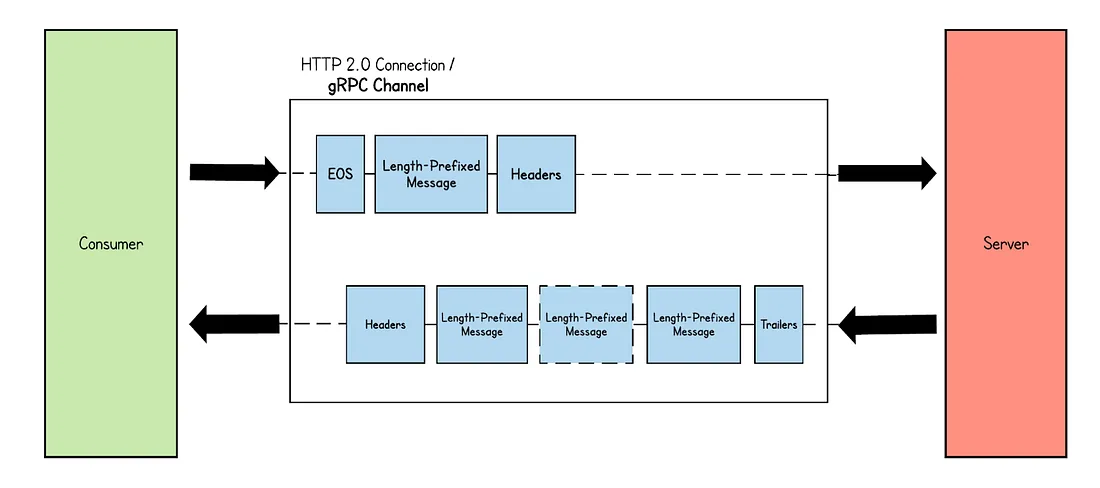link: gRPC API
gRPC Communication Patterns
gRPC, built on the modern HTTP 2.0 protocol, supports various communication patterns that cater to different needs in distributed system communications.
Simple RPC
Simple RPC is gRPC’s most basic pattern, where the client sends a single request and receives a single response. This pattern mirrors a traditional function call but over a network, making it ideal for straightforward operations where only a simple response is needed.
Server-Streaming RPC
Server-Streaming RPC is used when the server needs to send back multiple data streams in response to a client’s single request. It’s particularly useful for delivering continuous data, such as live feeds or streaming large datasets.
The server sends multiple messages back to the client under the same request, which can enhance the client’s ability to process data incrementally.
Client-Streaming RPC
Client-Streaming RPC allows the client to send a series of messages to the server, which responds with a single message after all the client messages have been received. This pattern suits scenarios where the client needs to upload significant amounts of data but only requires a small amount of data in response.
This could be used for batch processing where the client sends data in chunks.
Bidirectional Streaming RPC
Bidirectional Streaming RPC enables both the client and server to send a stream of messages to each other simultaneously. This pattern is beneficial for applications requiring real-time communication and interaction, such as chat applications or collaborative platforms.
Both parties can independently send and receive messages, which facilitates dynamic and responsive interactions.



